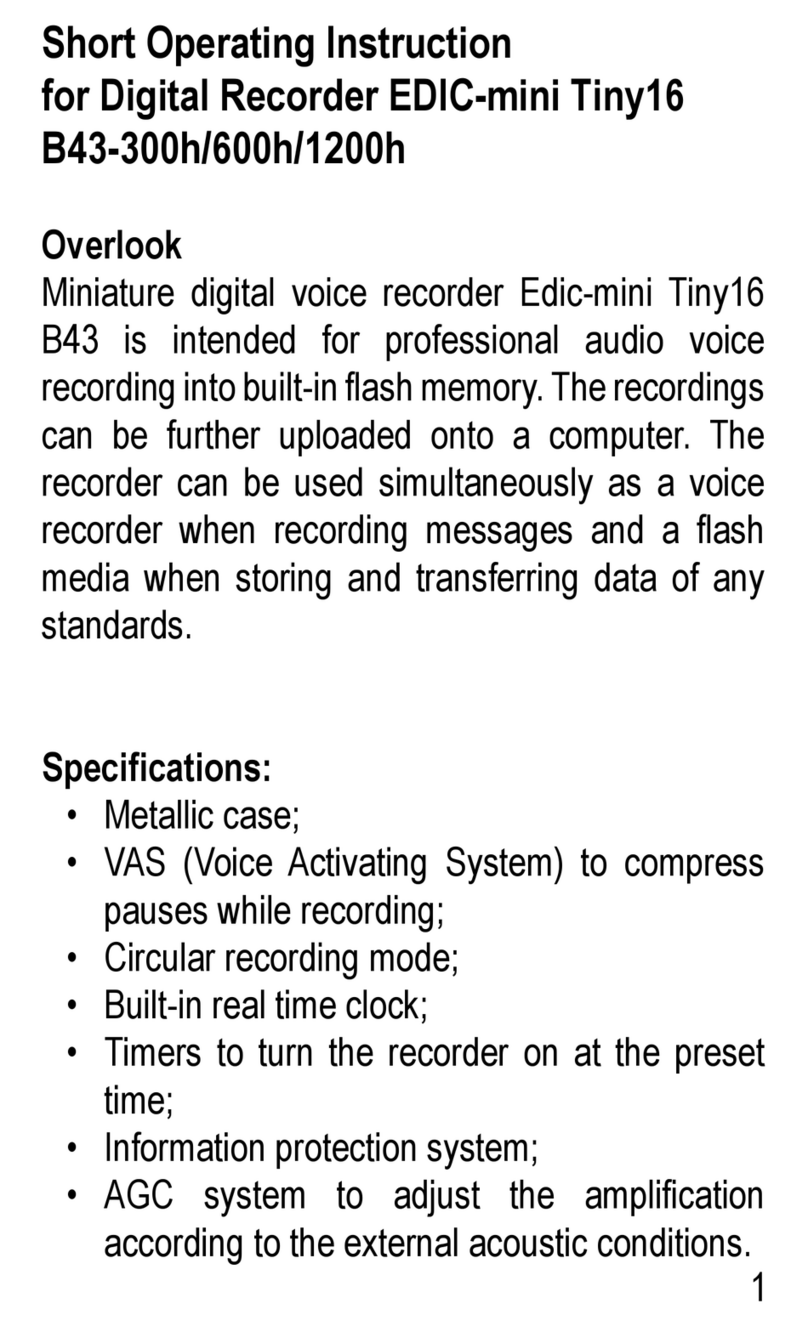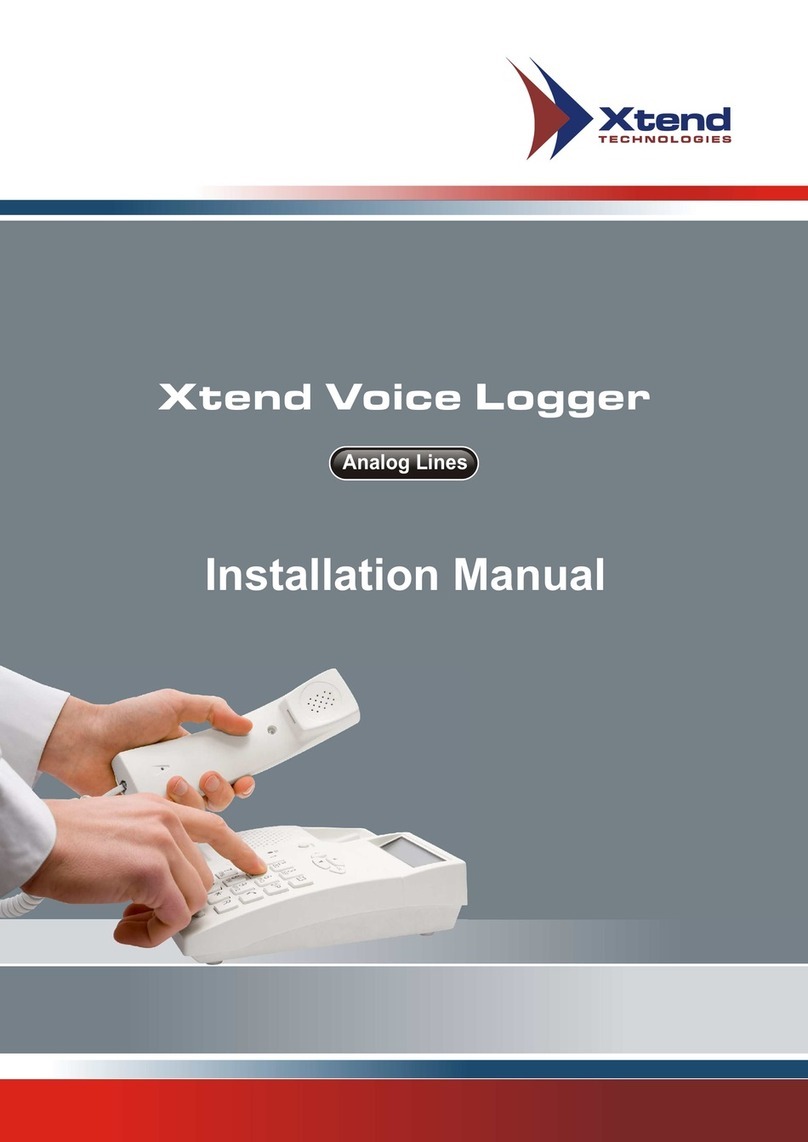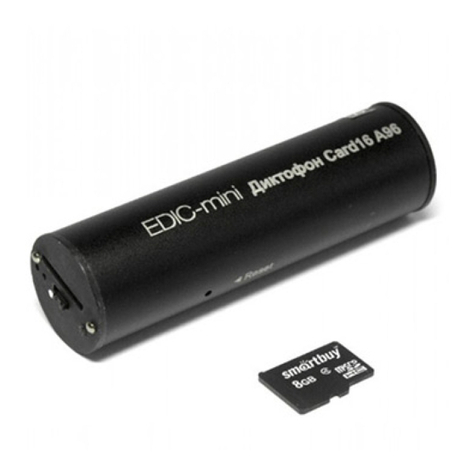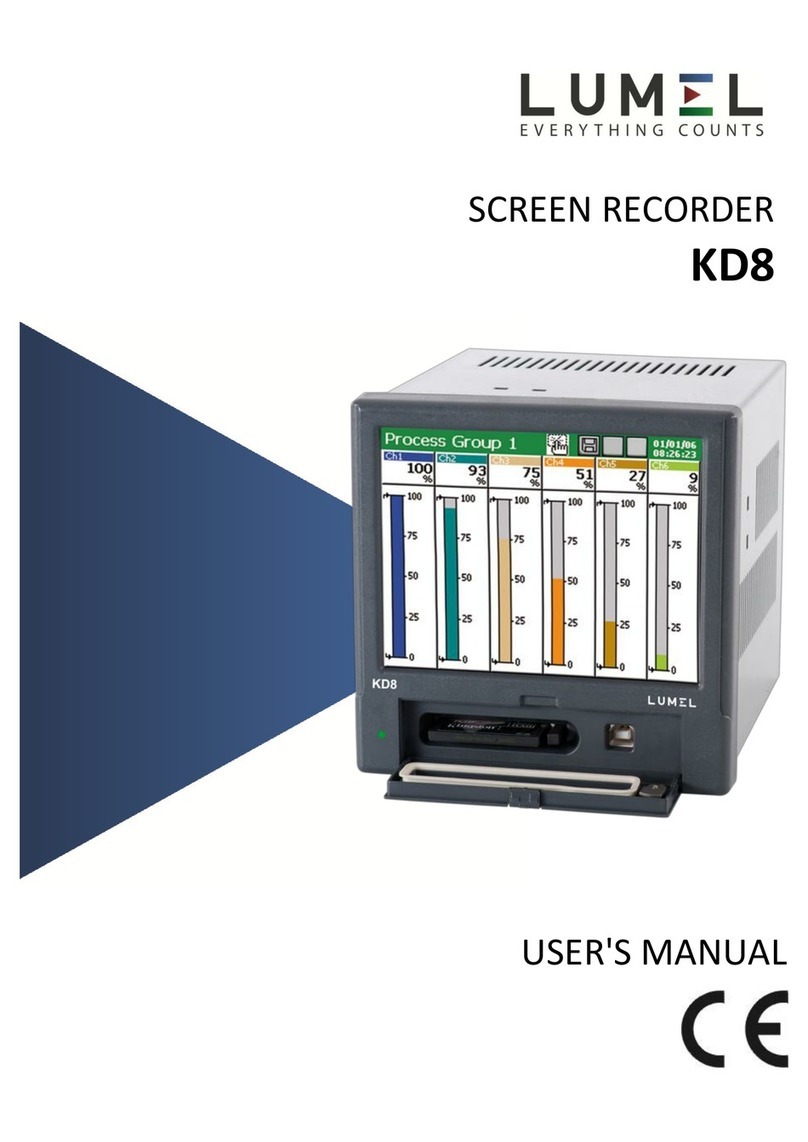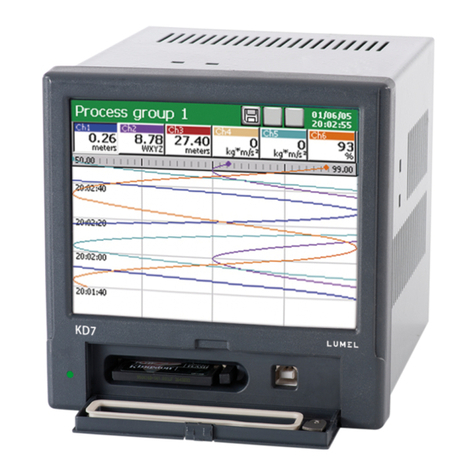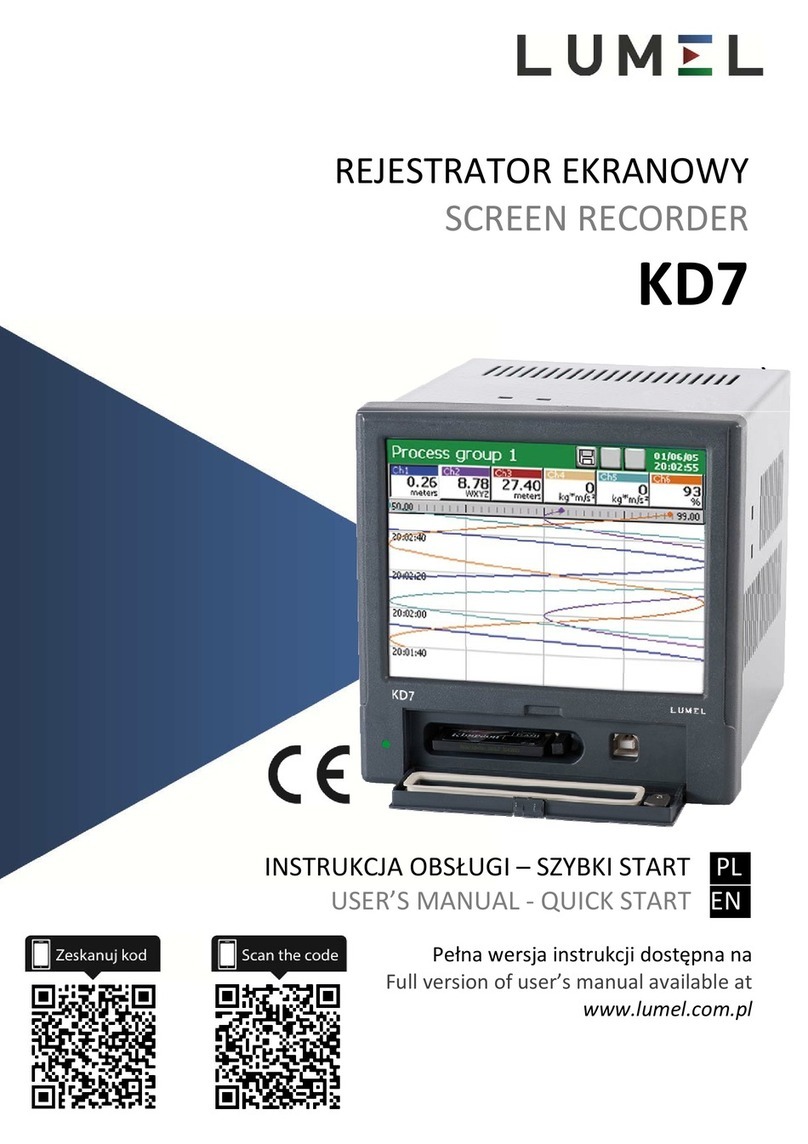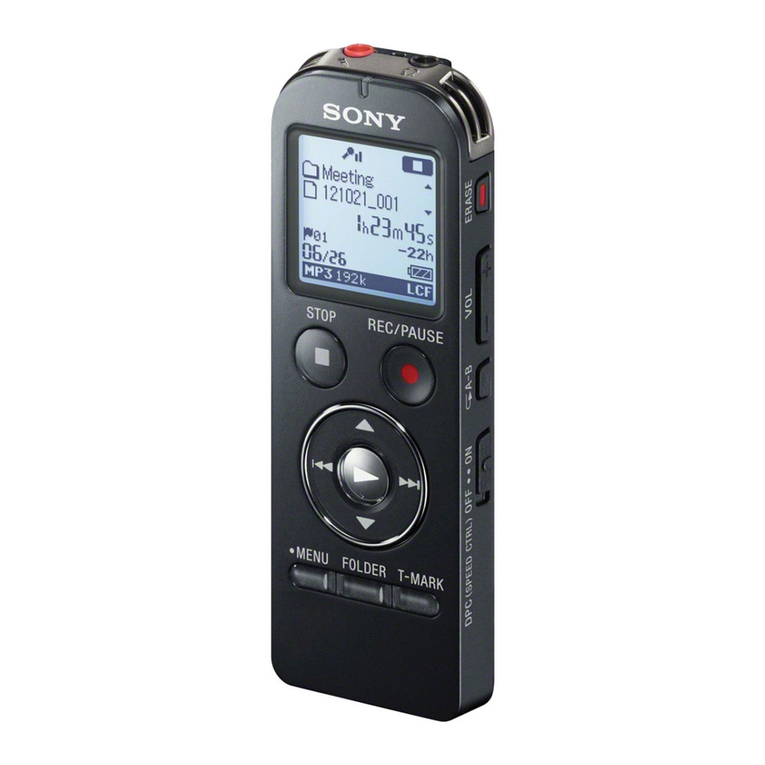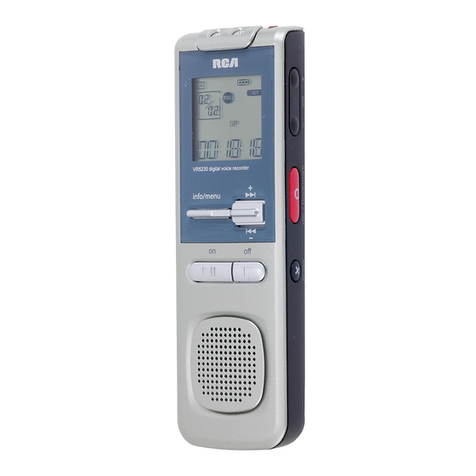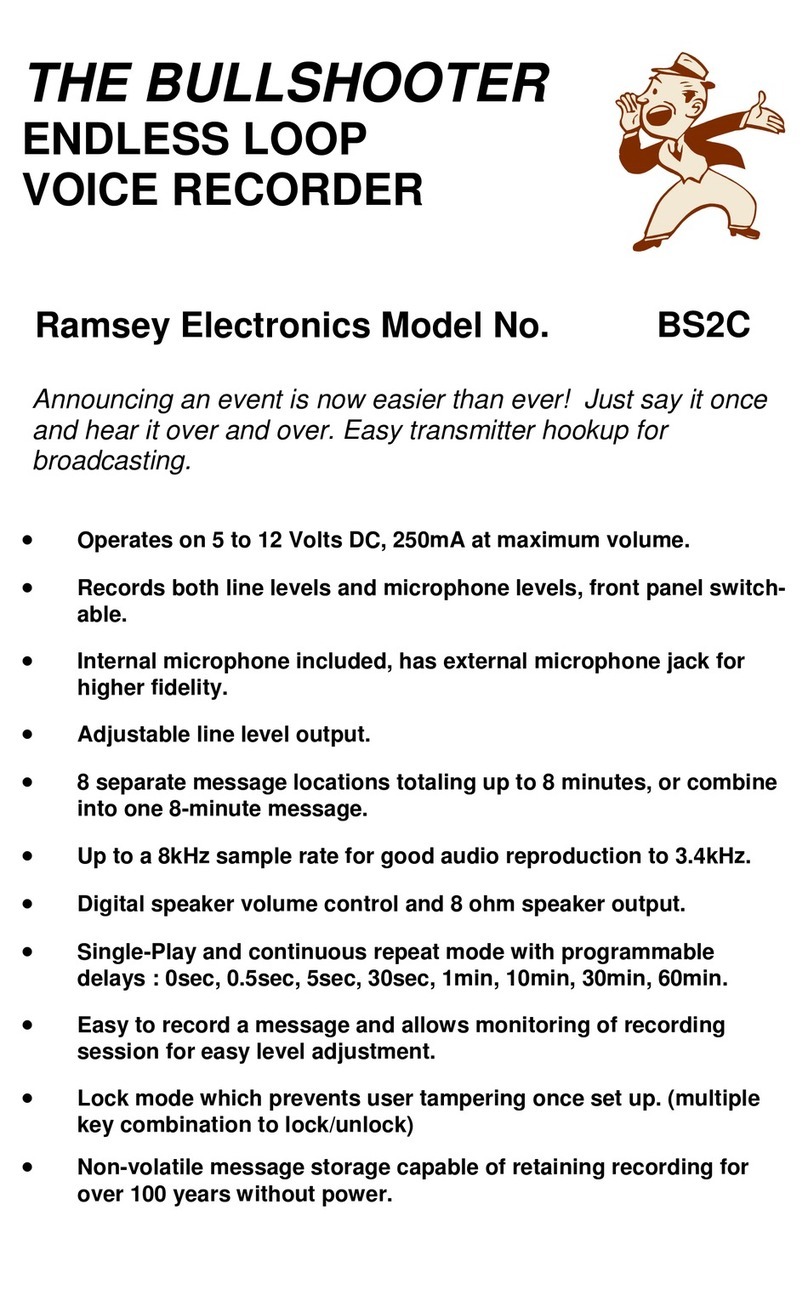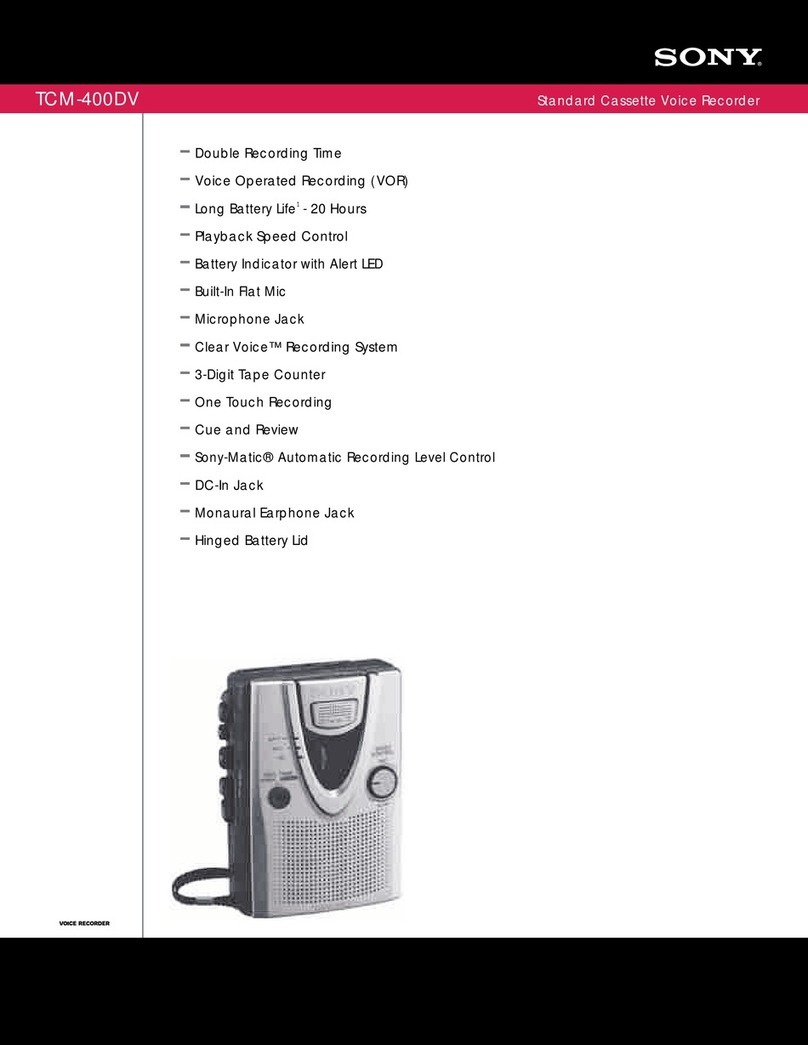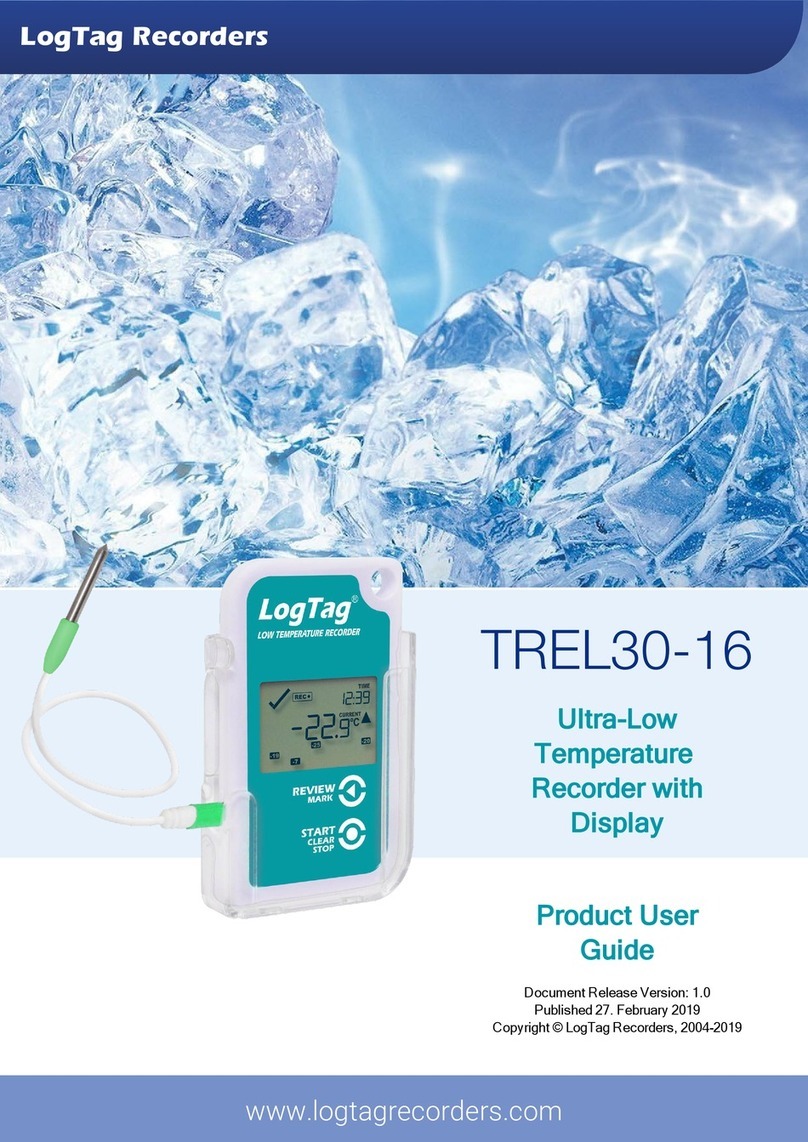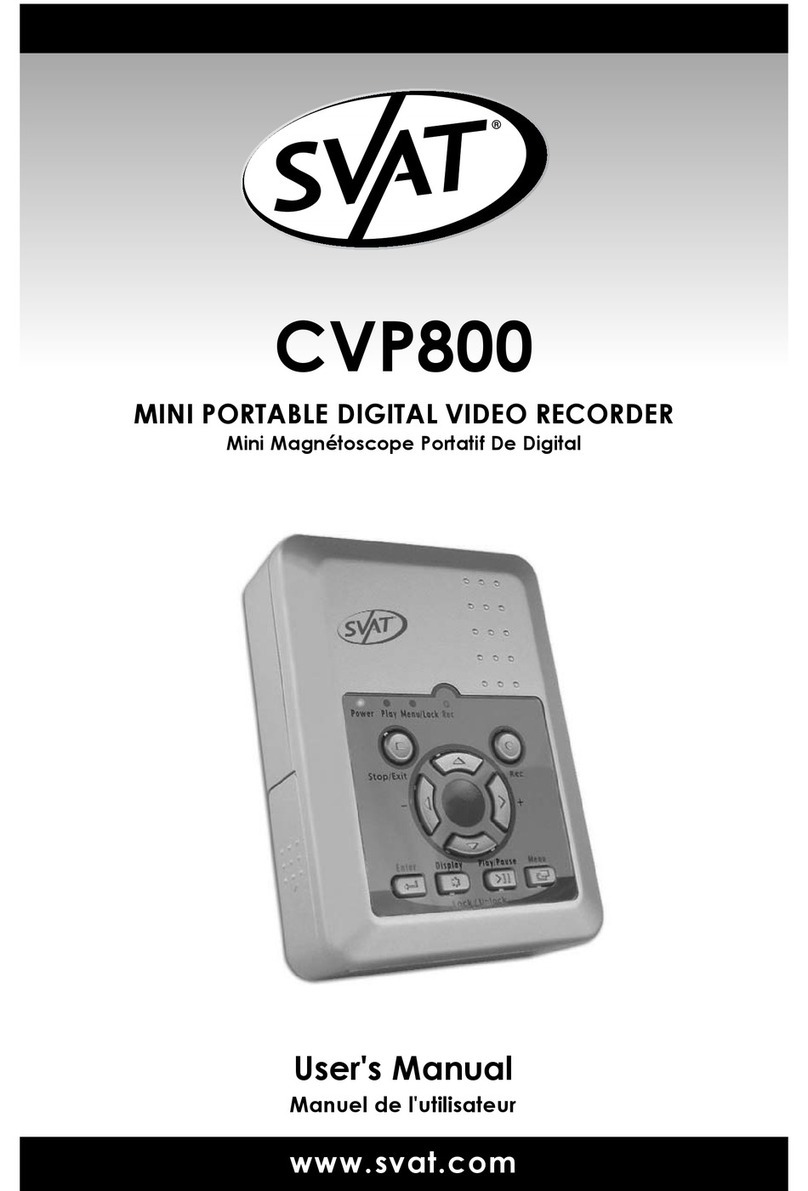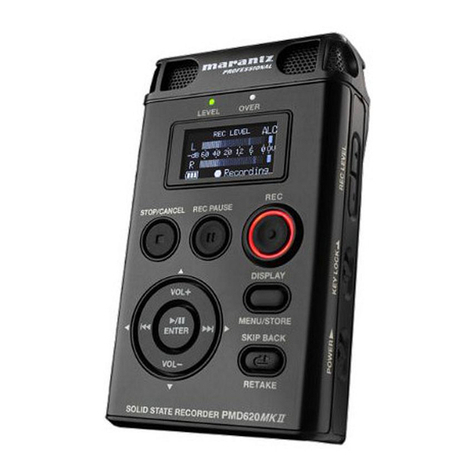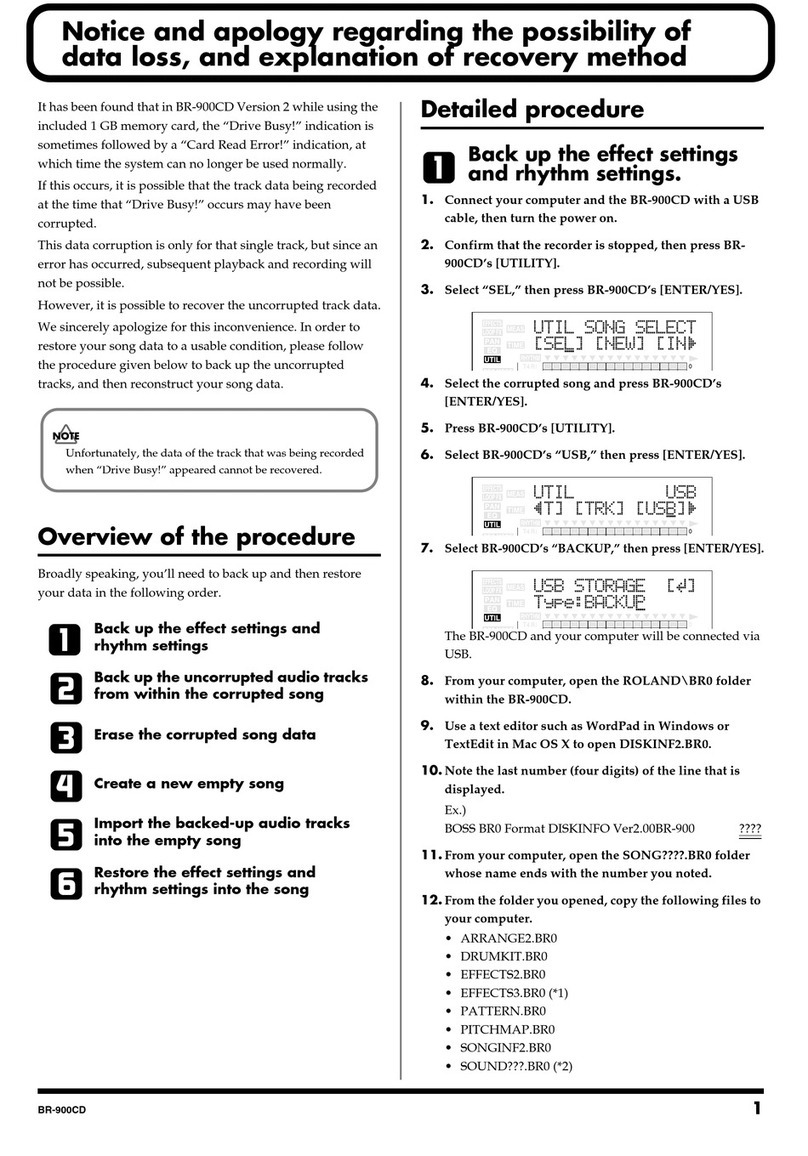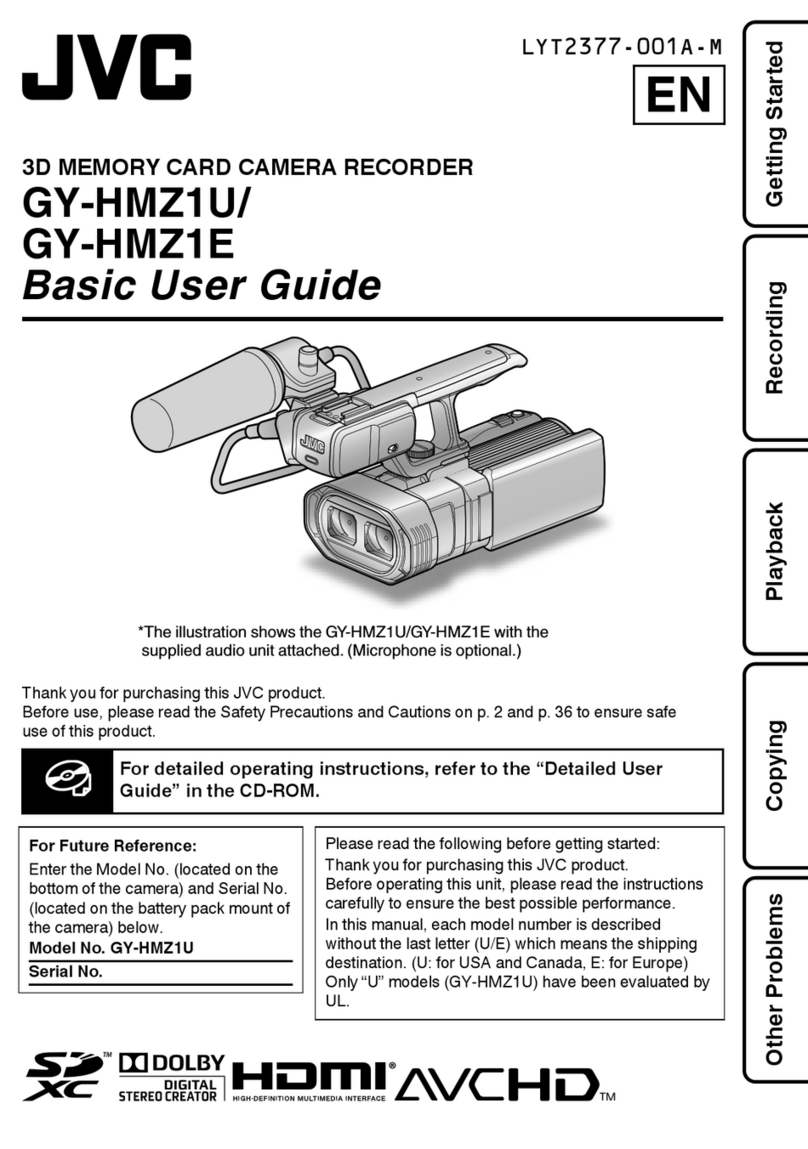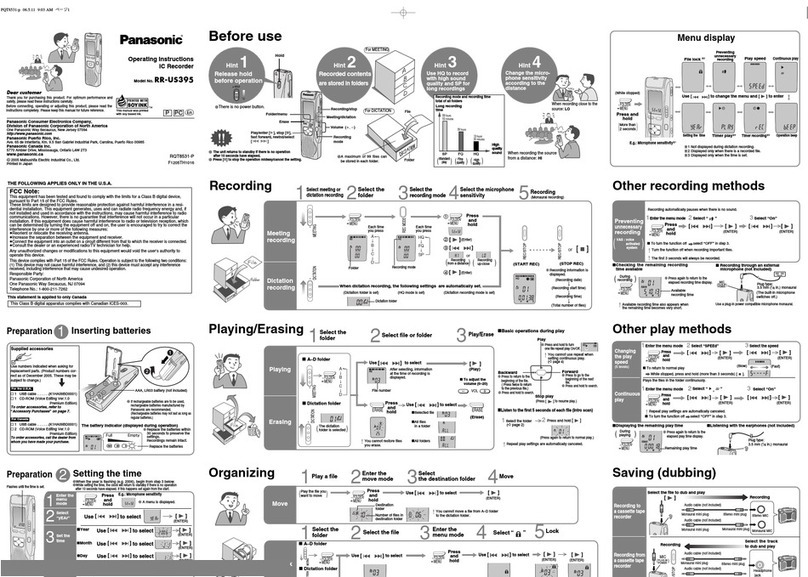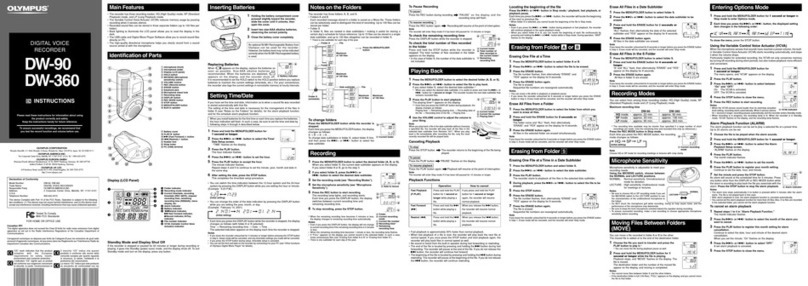1. APPLICATION
In order to obtain the information exchange, when using the serial link, one must choose
the interface type and validate the interpretation way of transmitted data. The interface type defines
only electrical transmission parameters and the way of the device connection.
Such features, as the possibility to service several devices, check the transmission correctness
and the principles of access to the device, depend on the data interpretation.
The task of the protocol is to define which data type is interpreted (permitted) and in which way
they are interpreted.
AMODBUS asynchronous character transmission protocol has been implemented on the serial link
of the KD8 recorder. The parameter configuration of the RS-485 serial link is described in the KD8
recorder user’s manual.
Parameter set of the KD8 recorder serial link:
•Recorder address 1 ...247
• Baud rate 300, 600, 1200, 2400, 4800, 9600, 14400, 19200, 28800,
38400, 57600, 115200 bit/s
• Working mode ASCII, RTU
• Information unit ASCII: 8N1, 7N2, 7E1, 701
RTU:8N2, 8N1, 8E1,8O1
• Maximal turnaround time 100 ms
2. DESCRIPTION OF THE MODBUS PROTOCOL
The MODBUS interface is a standard adopted by manufacturers of industrial controllers for the
asynchronous character exchange of information between different devices and measuring systems.
It has such features as:
• Simple access rule to the link based on the “master-slave" principle,
• Protection of transmitted messages against errors,
• Confirmation of remote instruction realization and error signaling,
• Effective actions protecting against the system suspension,
• Taking advantage of the asynchronous character transmission.
Device controllers working in the MODBUS protocol can communicate with each other, taking
advantage of the master-slave protocol type, in which only one device (the master - superior unit)
can originate transactions (called ’’queries"), and others (slaves - subordinate units) respond only to
the remote requested data from the master. The transaction is composed of the transmitted
command from the master unit to the slave unit and of the response transmitted in the opposite
direction. The response includes data requested by the master or the confirmation of the command
realization.
Master can transmit information to individual slaves or broadcast messages destined for all
subordinate devices in the system (responses are not returned to broadcast queries from the master)
The format of transmitted information is as following:
• master => slave: device address, code representing the required command, data to be sent,
control word protecting the transmitted message,
• slave => master: sender address, confirmation of the command realization, data required by
the master, control word protecting the response against errors.
If the slave device detects an error when receiving a message, or cannot realizes the command, it
prepares a special message about the error occurrence and transmits it as a response to the master.
Devices working in the MODBUS protocol can be set into the communication using one of two
transmission modes: ASCII or RTU. The user chooses the required mode, along with the serial
